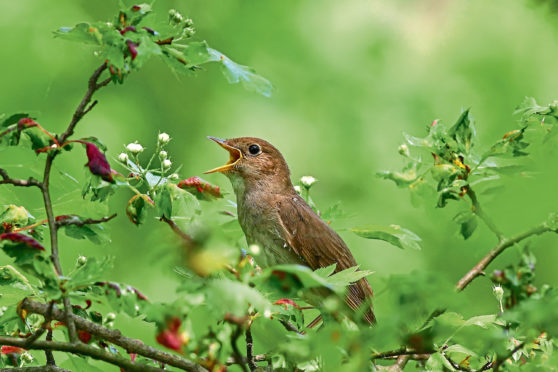
The nightingale has long been cherished for its unique and melodious song, symbolising creativity and virtue in art, literature and song. Yet it could be extinct in Britain within decades.
Conservationist Sam Lee tells Laura Smith the Honest Truth about the celebrated bird.
What can you tell us about nightingales?
Nightingales are actually very elegant in their simplicity. They’re medium-sized brown songbirds with a slightly whiter belly, very plain in decoration. They put all their evolutionary genius into their song, of course.
Nightingales spend their summers over here in the UK and across northern Europe, all the way to Western Mongolia. For winter, they settle in Sub-Saharan Africa and the nightingales that reside in England will journey to Senegal and Sierra Leone.
Are they hard to spot in the wild?
There are very few nightingales left in the UK, about 5,500 pairs in total. They live mostly in the southern counties of Sussex, Essex, Kent, Suffolk and Norfolk in England, really hugging those areas. They’re very hard to spot because they hide in thickets and are very well camouflaged but they can be heard easily and that is their great giveaway.
What makes their song so unique?
The nightingales’ song is what separates them from all other birds and most importantly their singing at night. Male nightingales are the only birds that continuously sing all night long with no pause for almost six weeks, constantly calling up to the stars to try to catch the ears of a female flying overhead.
They sing at night because that is where they have found their ecological niche. Much as the male peacock has put its energy into its tail, the nightingale has evolved its song to outstrip other males. It has developed into this highly dexterous, inventive and phrase-rich sound that is superior to so many other birds in capacity.
Why are they so popular in folklore?
Nightingales have appeared in folk songs, folklore and myth for thousands of years. Obviously, there’s the great Greek myth of Philomena (who is turned into a nightingale) but there are other folk songs in European culture which go back further, such as the Epirean music of northern Greece which is some of the oldest known music in Europe.
Reference to the nightingale’s song is also very common to folklore and folk songs throughout history.
What about poetry, literature and art?
The cultural fascination with nightingales also extends to art, poetry and prose. Nightingales often symbolise creativity as a link to an ancient form of muse, or nature as muse, virtue and goodness.
There are also many references in art, literature and poetry within the last four or five centuries. Some famous examples are Keats’s Ode To A Nightingale and Oscar Wilde’s The Nightingale And The Rose, published in 1888. There’s also the famous wartime ballad, A Nightingale Sang In Berkeley Square, which was written in 1939 and sang by Vera Lynn.
When was their song first broadcast live?
The nightingale came into British awareness, quite sensationally, in 1924 when Beatrice Harrison – in her first broadcast with the BBC, and the first outside live radio broadcast – played her cello with nightingales as accompaniment.
Whenever she performed in her garden in Oxted, Surrey, nightingales would fly down and sing to her. This was the first time the bird had been heard on the wireless in the UK.
Are their numbers declining?
Yes, they are becoming much rarer.
We’re on course to lose the nightingale entirely in Britain in the next 40 years, as part of a great depletion and decimation of rare birds, particularly turtle doves and cuckoos.
Nightingales are part of a tragic decline that is happening as a result of the environmental damage we are wreaking on this country and the slow but steady impact of climate change.
The Nightingale by Sam Lee is published by Century, out now

Enjoy the convenience of having The Sunday Post delivered as a digital ePaper straight to your smartphone, tablet or computer.
Subscribe for only £5.49 a month and enjoy all the benefits of the printed paper as a digital replica.
Subscribe